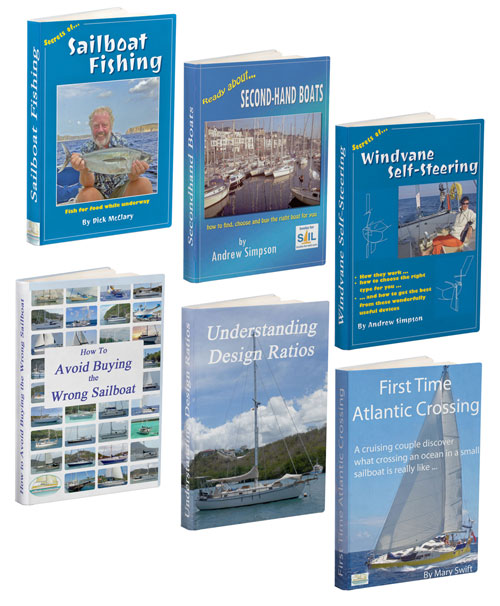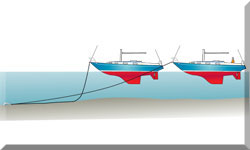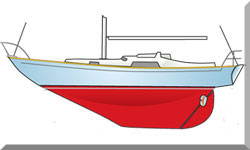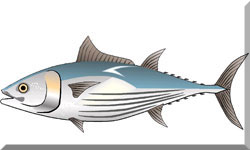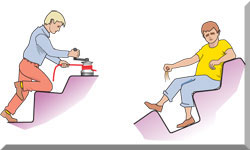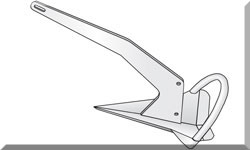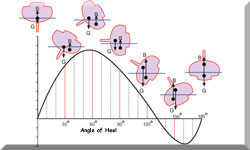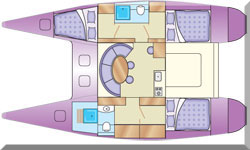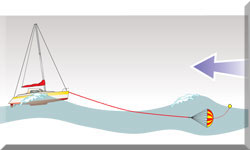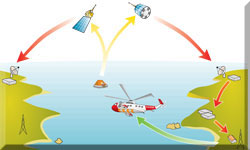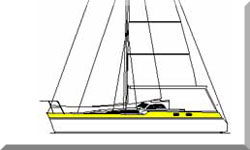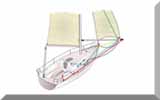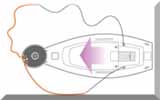Storm Sails: Essential Safety Gear for Offshore Sailors
"Storm Sails are Good Insurance," the old adage goes, and it's a truth every offshore sailor should heed. If you don't have storm sails aboard, in the form of a hanked-on storm jib and a storm trysail, you're tempting fate. While you might sail for years without needing them, the reality is that if you sail long enough and far enough, you'll likely encounter conditions where dedicated storm sails are not just preferable, but essential.
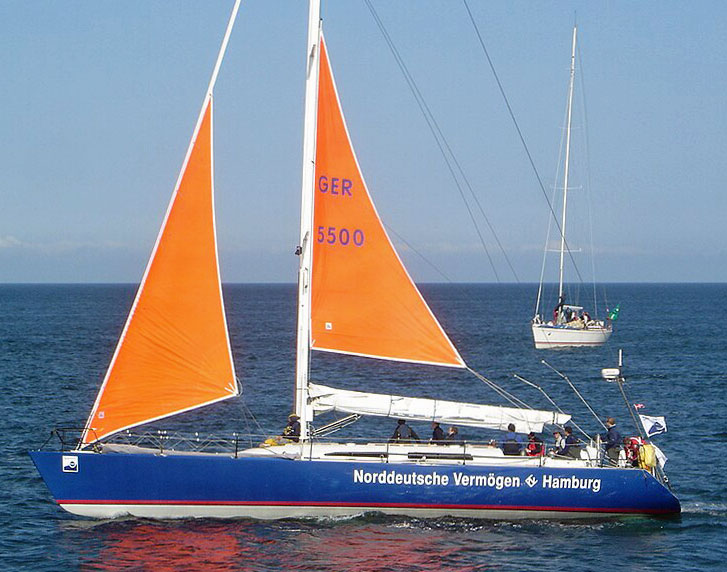 This skipper is wisely trying out his storm sails in benign conditions
This skipper is wisely trying out his storm sails in benign conditionsBy Hein.Mück - Own work, CC BY-SA 3.0, https://commons.wikimedia.org/w/index.php?curid=12653432
Why Storm Sails are Essential
The primary purpose of such sails is to maintain control and stability in heavy weather. When winds reach gale force or beyond, your regular sails, even when reefed, can become overpowered, causing the boat to heel excessively, round up uncontrollably, or even broach. Storm sails, being smaller and made of much stronger material, offer a reduced sail area and increased strength, allowing the boat to remain balanced and manageable. They are designed to withstand the extreme loads imposed by high winds and waves, preventing sail damage and potential rigging failure.
Beyond control and stability, storm sails contribute significantly to overall safety. By reducing stress on the boat's rigging and hull, they minimize the risk of damage that could compromise the vessel's integrity. In severe storms, maintaining forward motion, even at a slow pace, is crucial for steerage and preventing the boat from being pushed downwind into dangerous shoals or lee shores. Storm sails provide this essential drive, allowing the crew to navigate safely through challenging conditions.
Every offshore cruising boat should carry a storm jib and trysail, which is a small, heavily built mainsail that is used in place of the regular mainsail in heavy weather. Hove-to under these sails, a well-found yacht should be capable of riding out all but the most extreme conditions. While long-keeled boats often heave-to with relative ease, fin and skeg sloops may require more attention to sail balance. Achieving this balance might necessitate setting the storm jib on the forestay or on a removable inner forestay positioned just aft of it.
Storm sails are an essential piece of safety gear for any boat that is sailing offshore. They should be inspected and maintained on a regular basis to ensure that they are in good working order.
Choosing the Right Storm Sails
Selecting the correct storm sails is critical for their effectiveness. Several factors must be considered:
- Size: Storm sails must be appropriately sized for your boat. Too large, and they won't provide the necessary reduction in sail area; too small, and they may not provide sufficient power to maintain steerage. North Sails provides recommended sizes for storm jibs and trysails based on boat length and fabric weight (see table below). These recommendations offer a good starting point, but consulting with a sailmaker experienced in offshore sailing is highly advisable.
- Material: Storm sails must be constructed from robust, heavyweight sailcloth. Traditionally, Dacron has been the material of choice, but modern high-tech fabrics offer superior strength and lighter weight. The fabric weight (measured in ounces) should be appropriate for the boat size and anticipated conditions.
- Visibility: In heavy weather, visibility can be severely limited. Storm sails should be highly visible against the grey and white backdrop of a storm-tossed sea. Bright colors, such as orange or yellow, are recommended.
- Compatibility: Ensure the storm sails are compatible with your boat's rigging and hardware. The storm jib may require an inner forestay or a way to hank it onto the existing forestay. The storm trysail will need a dedicated track or a way to rig it to the boom.
- Construction: Look for robust construction details, including reinforced corners, strong stitching, and durable hardware. These sails will be subjected to extreme loads, so quality is paramount.
Setting and Using Storm Sails
Knowing how to deploy and use storm sails effectively is just as important as having them. Practice in moderate conditions is essential. Don't wait until you're in the midst of a storm to learn how to set your storm sails.
Setting a Storm Jib
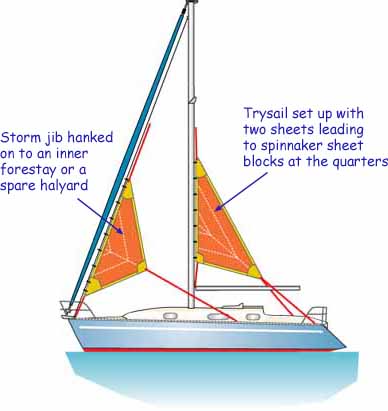 Rigging a storm jib and trisail
Rigging a storm jib and trisailIdeally, unlike in the pic above, an inner forestay rigged about one third of the J measurement aft of the forestay should be available for a storm jib.
A spare jib halyard must be used – not the spinnaker halyard which will chafe on the forestay, where its ultimate failure will be but a matter of time.
Owners of cutters who’ve resisted the temptation to install their staysail on a furling gear have reason to feel pretty smug at this point, as their storm jib can now be simply hanked-on in place of their staysail.
Setting a Storm Trysail
A separate mast track should be provided for the trysail, which should be sheeted through a block on the quarter rather than to the end of the boom. Before heavy weather arrives, prepare the trysail by feeding the sail slides into the track, inserting a pin beneath to prevent them from falling out, and securing the bagged sail at the foot of the mast, ready for deployment. A prudent skipper will ensure an end-stop at the top of the track to prevent the sail from coming off the top if the tack isn't secured properly before hoisting. Ideally the boom should be dropped on deck and secured, lowering the Centre of Gravity, reducing windage and negating its skull crunching malevolence, but this won’t be an option if you’ve a rigid kicker.
Using Storm Sails:
Once set, storm sails should be used in conjunction with other heavy weather techniques, such as heaving to. Heaving to involves setting the sails in a specific configuration that causes the boat to lie at an angle to the wind and waves, minimizing drift and providing a more comfortable ride.
Recommended Sizes of Storm Sails
According to North Sails' advice, the sizes of storm jibs and trysails should be:
Storm Jibs
Fabric |
Boat Size |
Luff |
Leech |
Foot |
| 6oz | 24-28' | 13.1' | 10.1' | 6.75' |
| 7oz | 26-33' | 15.5' | 12.2' | 7.75' |
| 8oz | 31-36' | 17.7' | 13.7' | 8.9' |
| 9oz | 34-38' | 19.9' | 15.8' | 10.0' |
| 9.5oz | 37-50' | 22.51' | 17.88' | 11.31' |
| 9.5oz | 50'+ | 25.44' | 20.0' | 12.8' |
Storm Trysails
Fabric |
Boat Size |
Luff |
Leech |
Foot |
| 8oz | 30-35' | 16.0' | 19.0' | 8.3' |
| 9oz | 35-38' | 18.0' | 21.5' | 9.3' |
| 9oz | 38-41' | 20.0' | 23.5' | 10.3' |
| 9.5oz | 41-50' | 22.22' | 26.09' | 11.44' |
| 9.5oz | 50'+ | 25.0' | 29.38' | 12.96' |
Best to Have Them but Not to Need Them…
With a careful eye on the weather forecast and due regard to the recommended sailing seasons in various parts of the world, your storm Jib and trysail should see little use.
However, this is no excuse for complacency. It's crucial to have everything worked out in advance. When you genuinely need your storm sails, it's too late to be figuring out which end goes up. Being prepared is the mark of a prudent sailor.
Recent Articles
-
Finishing Dacron Sails: Processes and Benefits
Feb 25, 25 02:18 PM
Beyond the weave: learn how finishing treatments boost Dacron sail performance and longevity. -
Understanding Dacron Sail Weave
Feb 25, 25 02:17 PM
Not all Dacron is equal: Unravel the complexities of its weave and its sailing benefits. -
Is Dacron Sail Cloth Good Enough for Your Standard Cruising Sails?
Feb 25, 25 02:14 PM
Whilst Dacron sail cloth is the least expensive woven fabric for standard cruising sails, do the superior qualities of the more hi-tech fabrics represent better value for money?
